The perfect uniqueness, shape, and color blend make Philodendron bipennifolium a popular house plant.
Besides its stunning appearance, it also helps to remove harmful toxins present in indoor spaces.
I ask you, What is cooler than a plant that offers both beauty and quality air?
But, Philodendron bipennifolium is not that easy to care for.
Generally, Philodendron bipennifolium requires well-draining soil, the temperature range between 75 °F to 85 °F along with bright filtered light. Additionally, it demands humidity above 70%, fertilization about thrice a year, and repotting every 2-3 years for healthier growth.

If you are delighted about introducing them to your indoor space, you need to learn their basic care guides.
In this article, you can find their care guides, common problems, and solutions to resolve them.
Read the complete article to gain a deeper insight into philodendron bipennifolium.
Table of Contents
- Overview of Philodendron Bipennifolium
- Philodendron Bipennifolium: Care and Growing Guide
- 1. Sunlight and Location Requirement
- 2. Watering Requirements
- 3. Ideal Temperature
- 4. High Humidity
- 5. Soil Type
- 6. Adequate Fertilization
- 7. Growth Habits
- 8. Flowering Habits
- 9. Common Pests
- 10. Common Diseases
- 11. Frequent Pruning
- 12. Potting and Repotting
- 13. Propagation Methods
- 14. Toxicity of Philodendron bipennifolium
- FAQs About Philodendron bipennifolium
- Conclusion
Overview of Philodendron Bipennifolium
| Scientific/Botanical Name | Philodendron bipennifolium |
| Other Names | Fiddleleaf Philodendron, Horsehead Philodendron ,and splash gordan plant. |
| Family | Araceae |
| Origin | Argentina and Brazil (North America) |
| Plant Type | Herbaceous perennial tropical plant |
| Growth Zone | USDA Hardiness Zone 10b-11 |
| Height | 3-7 feet |
| Spread | 10-18 inches |
| Grown For | Foliage |
| Toxicity | Toxic to both humans and pets |
Philodendron Bipennifolium: Care and Growing Guide
First, growing a tropical plant like Philodendron bipennifolium is not that easy.
Most of our indoor spaces do not meet the conditions they require. Therefore, you need to recreate such an environment for your Philodendron, which might be a bit thicker.
Except for some specific care requirements, other care requirements of Philodendron bipennifolium are similar to other plants.
Here are the basic care requirements that your plant needs.
| Parameters | Favorable Conditions |
|---|---|
| Sunlight | 8-10 hours of bright indirect light |
| Temperature | 75-85 degrees fahrenheit |
| Watering | Once a week in summer and twice or thrice a week in winter |
| Humidity | Above 70% of the relative humidity |
| Soil Type | Well-draining, loamy, nutrient rich soil with pH 5-6 |
| Fertilization | 2-3 times a year |
| Pruning | once a year |
| Pot Size | 8-10 inches |
| Repotting | once in 2-3 years |
| Propagation | Via stem cuttings and air layering |
1. Sunlight and Location Requirement
Tropical plants like Philodendron bipennifolium are adapted to grow in bright light.
Therefore, you need to provide them with at least 8-10 hours of bright indirect light. It is better if you could provide 2-3 hours of morning sunlight or afternoon shades along with that.
In the natural environment, these plants grow in the rainforest under the shades of trees. Thus, direct scorching light is a culprit for them.
If you are growing your Philodendron bipennifolium indoors, you will need to provide them with about 70-85% of the indoor lights.
Similarly, you will need to provide them with about 20-30% of the outdoor light in an outdoor environment.
Symptoms of Insufficient Sunlight
- It causes reduced photosynthesis, which yields less energy production.
- It hinders the overall physiological activities of plants.
- Stunted growth
- Drooping, limpness, and curling of leaves
- Wilting and discoloration of foliage
- The plant grows dull and leggy.

Symptoms of Extreme Exposure to Sunlight
- Browning and yellowing of leaves edges
- Foliage appears dry and crispy
- High moisture loss from the leaves of the plant.
Tips to Provide Adequate Light
- Place the plant in a brighter space. I advise you to place your plant near an eastern-facing window.
- However, the northern or southern-facing window also works well for your Philodendron bipennifolium.
- If you are growing them outdoors, place them in shades.
- You should not transfer a plant from a brighter to lower light space.
- Opt for artificial grow lights if your plants are not receiving enough sunlight. You can provide 8-12 hours of LED or fluorescent light.
- You can draw a light drape or curtain if the plant is subject to scorching lights.
Pro Tip: Rotate your plant every week to obtain symmetrical growth.
2. Watering Requirements
The plant grows in the tropical rainforest, where the soil is consistently moist. Therefore, you need to keep their soil consistently moist.
But, it does not imply the plant adores soggy soil.
Philodendron bipennifolium is a hemiepiphyte with aerial roots. Its aerial roots help the plant absorb water and oxygen from the atmosphere.
Moreover, the most common problem in Philodendron arises as an aftermath of watering issues. Hence, be careful that you water your plant in a balanced way.
The ideal frequency to water Philodendron bipennifolium is once a week in summer and twice or thrice a month in winter.
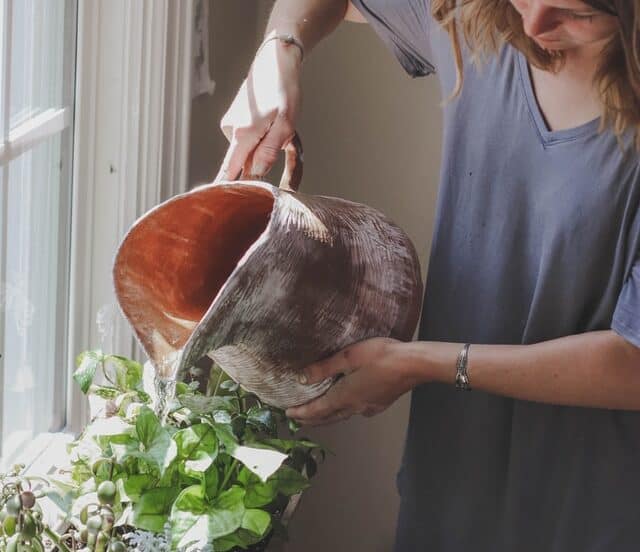
Symptoms of Watering Issues
- Underwatering in Philodendron causes curling, dry and crispy leaves. It also leads to yellow or brown patches on leaves.
- Stunted growth, wilting of plants, and droopy leaves are caused both over and underwater.
- Overwatering causes root rot, fungal and bacterial growth in plants and soil.
- Excessive water salts cause leaf burn.
- Too hot or cold water stresses the plant.

Tips to Water the Plant Properly
- Water the plant thoroughly whenever you water them. It helps to remove extra salts accumulated in the soil.
- Avoid watering the plants with excessively hot or cold water. Instead, opt for either room temperature or tepid water.
- Water the plants only after the top 25% of the soil dries out.
- You can use a soil moisture sensor to determine soil moisture and thus water accordingly.
- Avoid using water that contains excessive salts and toxins.
- You can also use a self-watering device to water the plant adequately.
- Always empty the saucer immediately after water gets collected in it.
3. Ideal Temperature
One of the peculiar features of the tropical climate is that Philodendron bipennifolium adores a warm climate.
In the natural environment, they grow in a slightly hot climate. Thus, they cannot tolerate low-temperature conditions.
The ideal temperature for Philodendron bipennifolium is 75°F (24°C) and 85°F (29°C).
However, at night, the temperature requirement slightly varies. Therefore, you need to maintain a temperature range between 65°F (18°C) and 70°F (21°C) at night.
Your Philodendron starts losing moisture and exhibits low photosynthesis and stunted growth in excessive temperature.
Similarly, temperature below 65 degrees Fahrenheit ceases the cellular and metabolic activities of the plant.
Tips to Maintain Ideal Temperature
- Increase humidity around the plant when the temperature is high.
- Avoid keeping your plant in a sunny spot during hot summers.
- You can provide insulation to the plant by covering the top layer of the soil with mulch like straw and dried grasses.
- Using a heating pad for the smaller plant is another option to protect plants in winter.
- Avoid keeping the plant by the window in winter as the temperature fluctuates there.
- You can cover your Philodendron with a frost blanket or transparent plastic in winters.
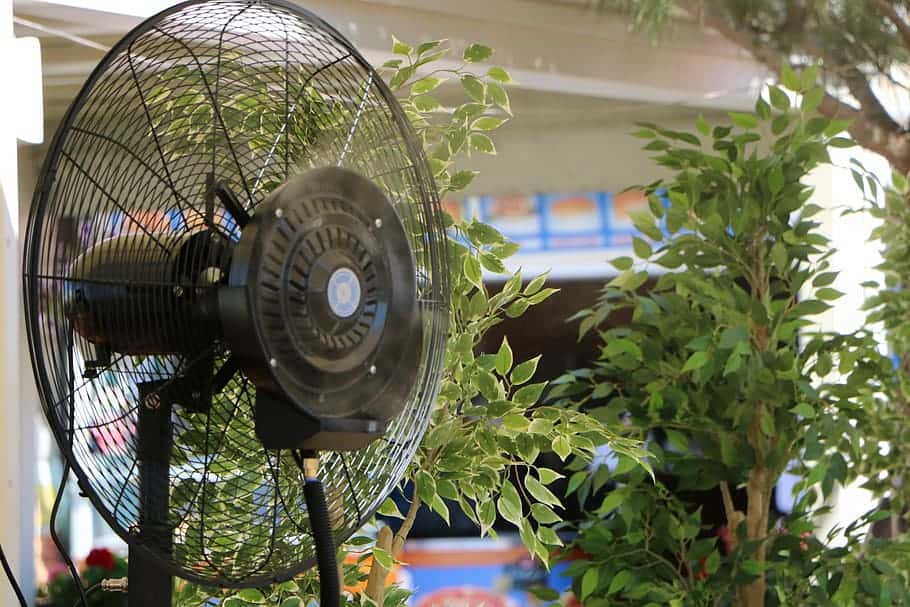
4. High Humidity
The next care involving your Philodendron bipennifolium is high humidity.
In the tropical rainforest, the plant grows under shades and moisture. Thus, you need to provide them with high humidity for their best care.
The ideal humidity for Philodendron bipennifolium is above 70% of the relative humidity.
Low humidity in Philodendron bipennifolium causes wilting, curling, discoloration, drooping and falling off leaves.
Generally, when the humidity drops, the plant loses its leaf to reduce the surface area for transpiration.
As the average indoor humidity is around 40% of the relative humidity, you might need to invest extra effort in maintaining its humidity requirement.
Tips to Maintain High Humidity
- Mist the leavers of your Philodendron bipennifolium every morning.
- Place a wet tray below the pot. It helps to increase humidity around the plant as the water evaporates.
- You can group your Philodendron with other plants. It helps to increase humidity through natural precipitation.
- Next is using a humidifier. It can be relatively expensive than other methods but is highly effective.
- You can also place your plant in a high humid place like a bathroom.
- You can also place a tray with water and pebbles near the Philodendron to provide humidity.

5. Soil Type
Your philodendron bipennifolium requires high soil moisture. Therefore, you need to keep its rootball consistently hydrated.
However, you also need to be careful not to water it excessively as it leads to root rot.
When the plant is overwatered, it blocks air sacks depriving roots of breathing.
Hence, always choose a potting mix that is well-draining, loamy, porous, nutrient-rich, and is between pH range 5-6.
The best part about loamy soil is that it combines sand, silt, and clay.
This mixture produces the ideal soil structure for Philodendron bipennifolium to grow. It also allows it to flourish without being dehydrated or soggy.
Pro Tip: You can add coffee grounds to the soil to make it slightly acidic.
The best potting mix for your philodendron bipennifolium is the orchid or African violet soil mix.
Here are some of the commercial potting mixes for your Philodendron.
- Sun Bulb 5011 Better-Gro Phalaenopsis Mix
- Hoffman 10301 Organic African Violet Soil Mix
- Espoma AV4, Organic African Violet Potting Mix
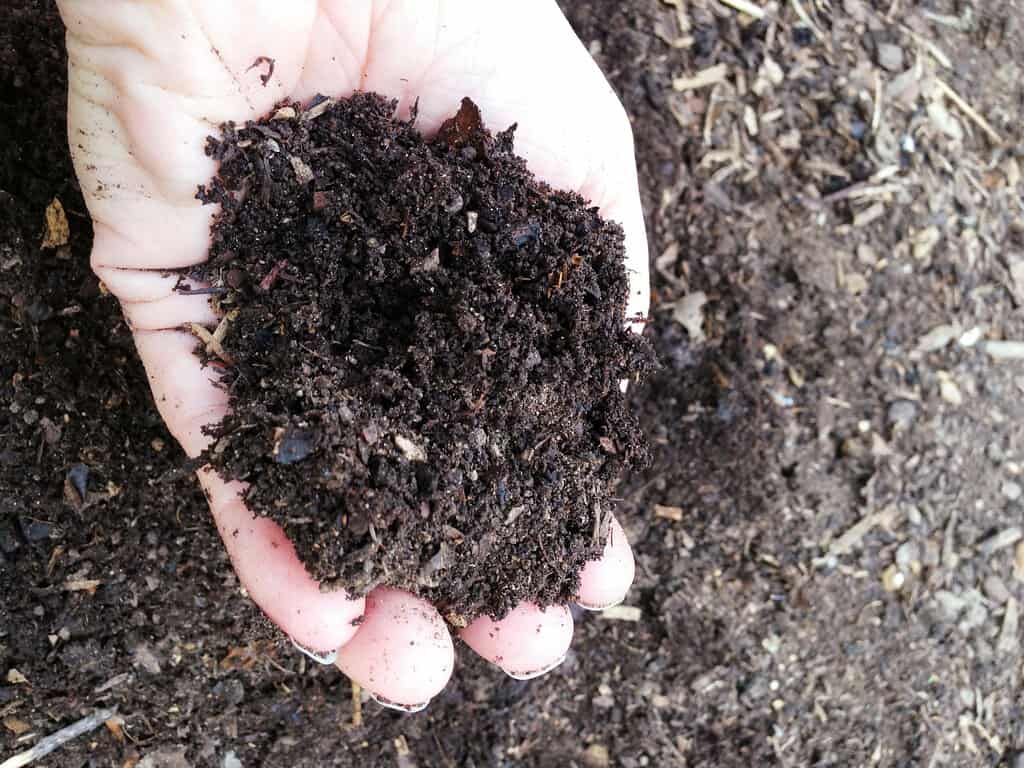
Make your Potting Mix
Alternatively, you can also make your potting mix. Follow the recipe below to do so.
- Mix 1 part of potting mix.
- One part of peat moss or coconut coir.
- One part of organic compost.
- 1/2 part of perlite or pumice.
- One part of coarse sand.
Pro Tip: You can also use charcoal, pines barks, and dried leaves to make soil light. Also, you can add 1/2 part of sphagnum moss instead of perlite or pumice.
6. Adequate Fertilization
Philodendron bipennifolium is not a heavy feeder, unlike other house plants. However, they do well if you fertilize them three times a year.
Fertilize them during their growing season with a slow-releasing fertilizer like organic compost.
You will not need to fertilize them often as the fertilizer releases nutrients slowly.
Alternatively, you can also use all-purpose liquid fertilizer or N.P.K. in the ratio of 5-5-5.

Here are some commercial fertilizers that you can use for your Philodendron bipennifolium.
- Jobe’s Organics 09524 Purpose Granular Fertilizer
- Miracle-Gro Water Soluble All Purpose Plant Food
- Dr. Earth 71164 91164 1 lb 5-5-5 MINIS Life All-Purpose Fertilizer
Insufficient nutrition causes wilting, drooping, and stunted growth in Philodendron bipennifolium.
However, it is not necessary to fertilize your plant in the winter season as it becomes dormant.
Tips to Properly Fertilize Philodendron bipennifolium
- If you use liquid feed, ensure to spray it five or six inches away from the base.
- Water your plants before fertilizing them. Moisture causes nutrients to travel throughout the roots system.
- Aerate the soil without disturbing the plant’s roots to absorb nutrients and moisture readily.
7. Growth Habits
Philodendron bipennifolium is a fast-growing plant that can reach a height of 3-7 feet. Similarly, it reaches a spread of 10-18 inches on average.
Moreover, the plant is a hemiepiphyte that grows on any surface it comes in contact with.
Therefore, in its native environment, it adheres to tree and rock surfaces to grow.
The plant bears aerial roots from which it takes in moisture and air.
Once the plant matures, you will need to support a moss stick, bamboo, or any other object.
Furthermore, its leave can grow up to 18 inches in length. Hence, you will need a larger space and pots for them.
8. Flowering Habits
The horsehead Philodendron bipennifolium blooms year-round. This aroid bears inflorescence that is off-white.
Moreover, this plant is capable of producing fruits when they mature. It bears tiny green fruits when they reach about 15 years or so.
9. Common Pests
Generally, Philodendron bipennefolium is free from pests attacks. However, it might attract common pests and bugs if not cared for properly.
Anyway, you need not be over stress as they can easily be knocked off.
Here are some of the most common pests in Philodendron bipennifolium.
| Common Pests | Symptoms |
|---|---|
| Mealy bugs | 1. White cotton-like webbings appears on undersides of leaves 2. Wilting, drooping and falling off leaves |
| Aphids | 1. Curling and falling off leaves 2. Stunted growth |
| Scales | 1. Brown bumpy and white cottony lumps develops on the leaves 2. Discoloration of leaves |
Solutions
- Deadhead the infected parts immediately using sterilized pruning shears or blades.
- Scrape off pests using a blunt knife or blades.
- Spray soap water over the entire plant.
- You can fuse cotton balls with isopropyl alcohol and gently dap over the infected surface.
- Use neem oil or other horticultural oils if the infestation is high.
- If the infestation is severely high, spray your plant with insecticides.
Preventive Measures
- Give a shower to your plant once a week in summer and twice or thrice a month in winter. It helps to wash off pests and their eggs from the plant.
- Inspect your plant regularly to check the signs of pest infestation.
- You should avoid grouping your plant with other infested plants.
- Spraying soap water every week also helps to get rid of pests.
- Soggy soil is a beloved spot for pests. Therefore, avoid overwatering your plant.
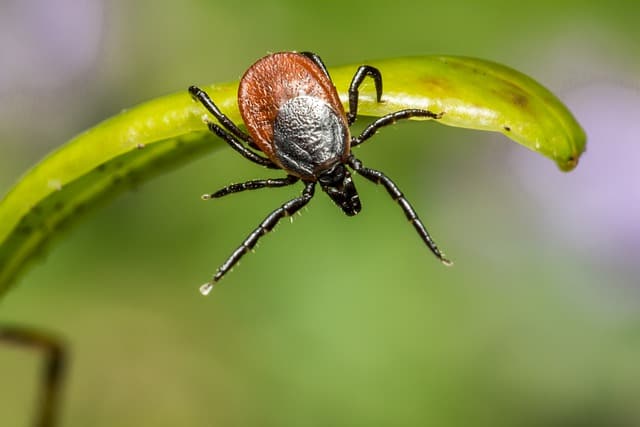
Learn more about How to Identify Insect Eggs on Leaves and Treat Pest Infestation?
10. Common Diseases
Here is another good news for Philodendron bipennifolium owners. The plant is robust and resilient to diseases.
But, unfortunately, it is not resistant to diseases. So you need to provide them with better care to bid farewell to the diseases.
Generally, overwatering and high soil compaction cause bacterial and fungal growth in the soil and the plant. Therefore, be cautious not to make your soil soggy and disease hub.
Here is the list of common diseases in Philodendron Bipennifolium.
| Common Diseases | Symptoms |
|---|---|
| Erwinia Blight | 1. Water-soaked lesions on the stems which on incidence spreads to leaves 2. Limp leaves or tan lesions appearance on older leaves 3. Yellowing and discoloration of leaves 4. Stunted growth |
| Pseudomonas Leaf Spot | 1. Dark-centered spots about an inch appears on the leaves 2. Drooping and limping of the leaves |
| Xanthomonas | 1. Yellowing of leaves' edges 2. Reddish- brown spots appears on the leaves. |
| Root Rot Disease | 1. Stunted growth 2. Drooping and wilting of leaves 3. Foul odor 4. Roots turns mushy and degenerates |
Solutions
- Deadhead the infected parts immediately to prevent the spread of diseases.
- To control leaf spots, apply fungicides that contain mancozeb or thiophanate methyl.
- Apply fungicides containing copper to control Xanthomonas.
- Inspect the plant and repot it immediately if you see signs of root rot. Also, remove the infected parts and pot them in a well-draining potting mix.
Sad Note: Unfortunately, if your plant is severely attacked, you might not be able to save it.
Preventive Measures
- Avoid overhead watering.
- Keep your Philodendron bipennifolium separate from other infected plants.
- Increasing air circulation around plants and in the soil helps control fungal growth.
- Avoid misting the plant at night to prevent fungal growth.
- Loosen the top layer of the soil. It ensures good soil aeration and prevents bacterial growth.
- Spray your plant with fungicides once or twice a year.
- Avoid overwatering and soggy soil.
11. Frequent Pruning
Frequent pruning is essential if you want to keep your Philodendron bipennifolium healthier.
But, the pruning requirements of the plant depend upon where you grow them—like on the patio, growing them outdoors might not need frequent pruning.
However, if you are growing them indoors, you might want to keep their size manageable as the plant takes up a lot of space.
Therefore, indoor plants might require frequent pruning to maintain proper plant size.
Generally, it is enough to prune them once or twice a year.
And, the best time to prune is as soon as the winter ends, as spring brings new growth.
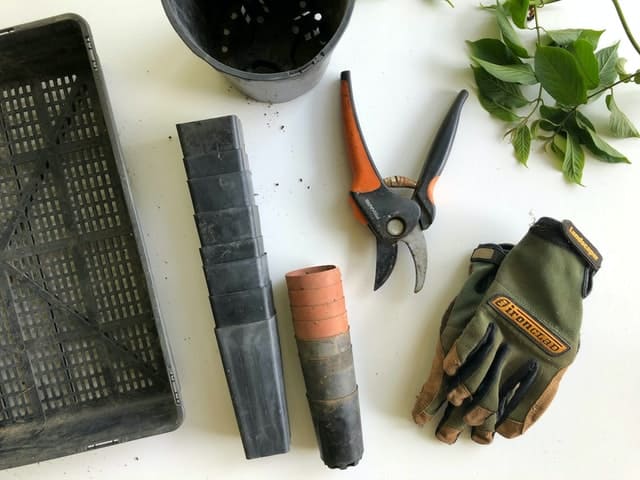
Things to Consider Before Pruning Philodendron bipennifolium
- Put on gloves, goggles, and masks as the plant is toxic.
- Cut off only dead, dried, discolored, and infected foliage.
- You should avoid pruning them more than 30% as it stresses the plant.
- Ensure to use sterilized materials.
- Carry out pruning at a spot away from children and pets.
- Always throw the pruned parts immediately in the garbage bin to avoid contact with children and pets.
Learn more about, How to Make a Philodendron Bushy?
12. Potting and Repotting
Generally, Philodendron bipennifolium grows larger. Therefore, you might need a slightly larger container for them.
However, it does not mean that the plant adores extra-large containers. In a larger container, the plant invests most of its energy to the root development, ignoring the shoot’s growth.
Similarly, it takes time to dry water in a larger container. In contrast, when the size of the pot is small, the plant suffocates and shows stunted growth.
Hence, it is ideal to use a container 2 inches larger than the size of the root ball. For example, you can use an 8-10 inches pot for a slightly matured Philodendron.
The next thing to keep in mind is the pot type. I suggest you use terracotta or clay pots. These pots are breathable and ensure proper aeration and drainage of water.
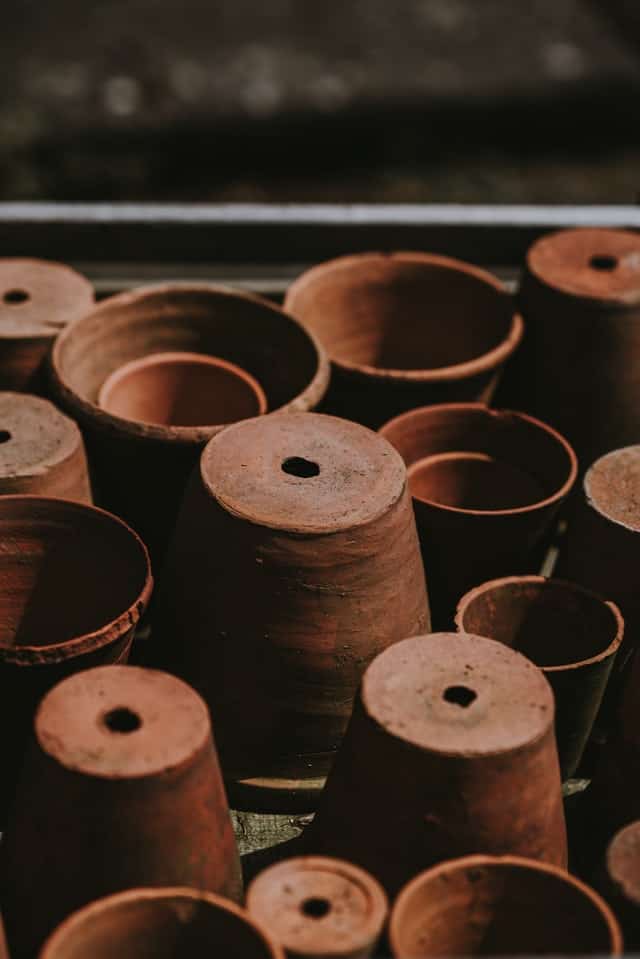
Signs to Repot Philodendron bipennifolium
- Plant is rootbound
- It shows discoloration and stunted growth
- When the plant matures, it needs to be repotted in a larger container.
- If the roots are poking out of the drainage holes, your plant might need repotting.
Repotting Philodendron bipennifolium
Therefore, you need to repot the plant time to retain its healthier growth.
Generally, it is best to repot Philodendron bipennifolium once 2-3 years.
I advise you to repot them in spring or summer as the plant grows rapidly in these seasons.
Next, you can identify the repotting requirement of your plant by inspecting its roots.

Tips to Repot Philodendron bipennifolium
- As the plant is toxic, you will need to put on safety measures like goggles, masks, and gloves.
- Afterward, take the plant out of the container gripping the base of the stem.
- However, repotting might be difficult if the plant climbs upwards in a moss stick. Carefully take the plant out of the pot along with the moss stick. At this point, you might need the others’ help to balance the moss stick.
- Then, take a clean container 2 inches wider in diameter than the earlier container. Also, ensure you take a container that has good drainage holes.
- Put on a few pebbles at the bottom.
- Then, fill the 2/3 portion of the container with a well-draining potting mix. Place the plant at the center of the pot (along with the moss stick) and fill it with soil from the sides.
- Here, avoid filling the potting mix to the brim. Instead, I advise you to leave some space to add compost in the future.
- Now, water the plant thoroughly and place it in a well-lit space.
13. Propagation Methods
Is it not cool to produce a new plant from the older plant?
Propagation is the easiest, cheapest, and a convenient way of producing a new plant. Also, when you propagate plants by asexual plants, you can obtain identical sister plants.
Generally, Philodendron bipennifolium can be propagated by two different methods.
- Stem Cuttings
- Air Layering
The best time to propagate Philodendron bipennifolium is in spring and summer.
In contrast, it might be harder to propagate them in winter because of temperature, light, and humidity issues.
Propagating Philodendron bipennifolium Via Stem Cuttings
It is by far the easiest method to propagate Philodendron bipennifolium.
To propagate Philodendron by stem cuttings, follow the steps below.
Step 1: Put on safety measures to protect yourself from plant toxins. Then, take a sterilized knife or sharp blade.
Step 2: Choose a healthy and long stem. Now, cut the stem with sharp scissors or blades.
You can cut the stems further into many cuttings. However, ensure each cutting consists of a node (from which leaves and aerial roots appear) and two leaves.
Also, ensure that each cutting is 2-4 inches in length.
Pro Tips: Make the incisions at an angle of 45 degrees as it provides a larger surface for rooting to occur.
Step 3: Now, leave the cuttings for callus formation. It might take 2-3 days.
Step 4: At this point, your cuttings are ready to be propagated. Take a well-draining pot and lay a few pebbles at the bottom. Now, fill the pot with a well-draining potting mix.
Step 5: Press the cuttings a few inches below the soil such that the node lies underneath the soil. Then, water the plant thoroughly and leave it in a bright space.
However, to propagate them in water, take a transparent jar. Fill it with water and place the cuttings submerged in it. And, ensure to change the water every 3-4 days.
Generally, the cuttings will start rooting in about 2-3 weeks.
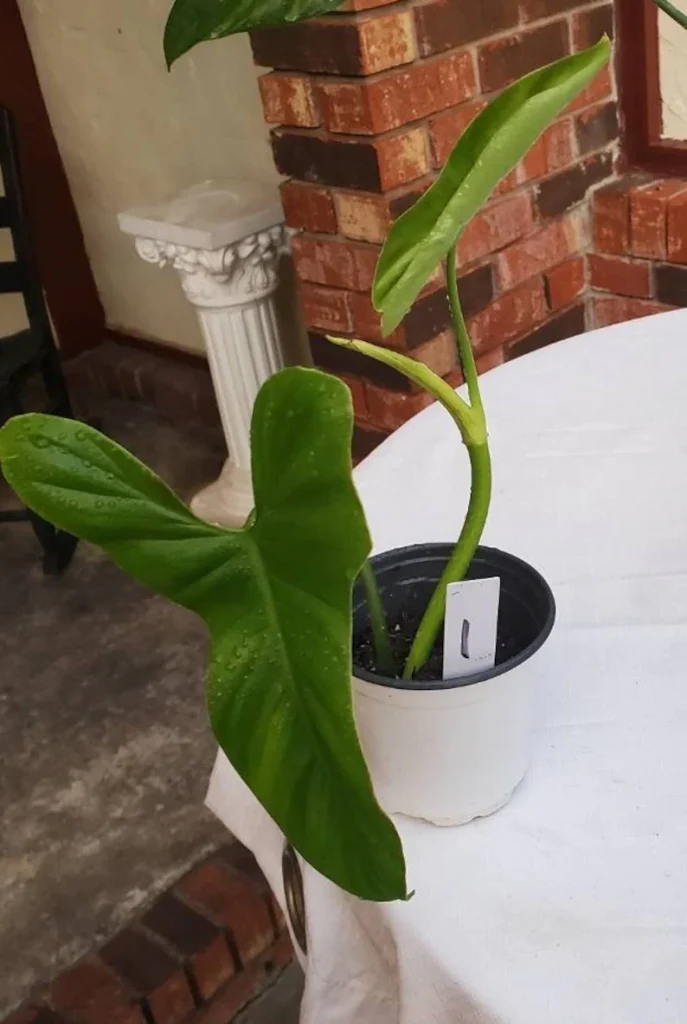
Propagating Philodendron bipennifolium Via Air Layering
If you want to try some adventurous and fun propagation, air layering is for you.
It involves a rooting process within the same plant.
If the method sounds nerve-wracking and baffling, relax. All you need is some guide which I will provide to you.
So, you up for the challenges? Then, let us hop into the propagation steps.
Step 1: Take a knife or blade. Then, sterilize it with 70% isopropyl or rubbing alcohol.
Step 2: Now, make a cutting about 2 inches deep and 2 inches in length. You need to keep the wound wide open.
To do so, you can insert a toothpick such that the wound opens into a cave-like structure.
Step 3: Fill the wound with wet sphagnum moss and tie the wound with stems by a thread. You can also mix rooting hormones to speed up the process, but optional.
Lastly, you will need to wrap the wound with transparent plastic.
Step 4: After a few weeks, the wounded area will develop roots. Generally, the roots become visible from the plastic wrap within a month.
Step 5: Now, the layering is ready to be propagated. Cut the stem below the wounded area and leave it for a few hours. Then, you can propagate it into the soil after the callus forms in the cutting.
Then, remove the plastic wrap from the wound and plant it in a well-draining pot. Water the plant thoroughly afterward and place it in a well-lit space.
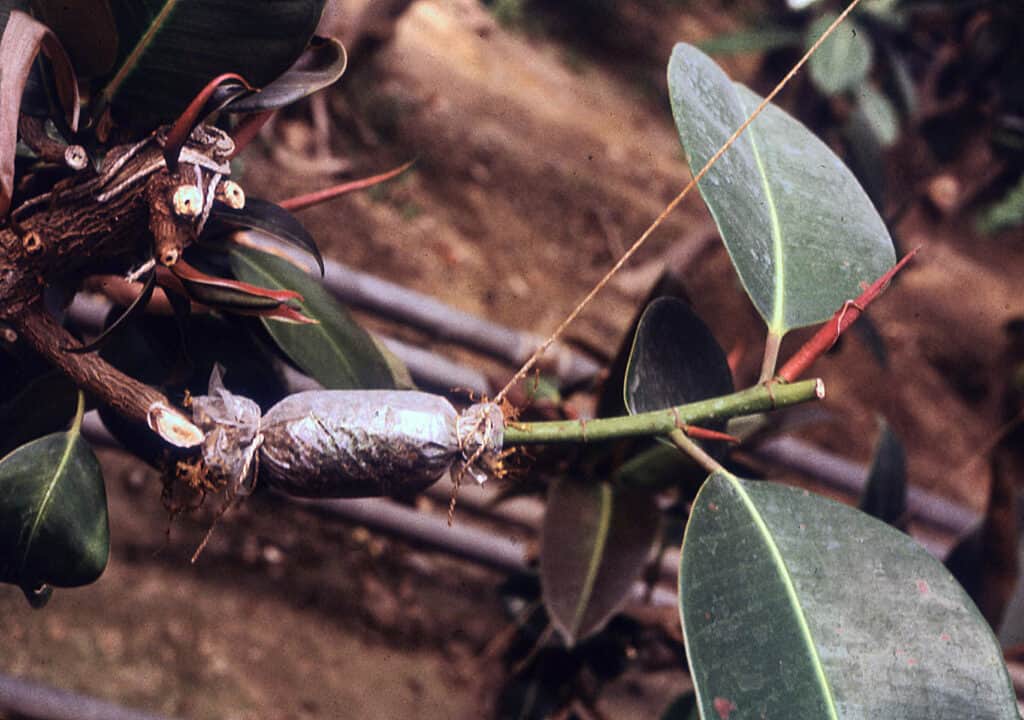
14. Toxicity of Philodendron bipennifolium
Generally, all varieties of Philodendron are toxic to humans and pets.
Philodendron bipennifolium contains insoluble calcium oxalates.
It causes irritation, pain, swelling of the mouth, tongue, and lips, and difficulty in the stomach when injected.
Similarly, it shows drooling, vomiting, and pawing at the mouth in pets.
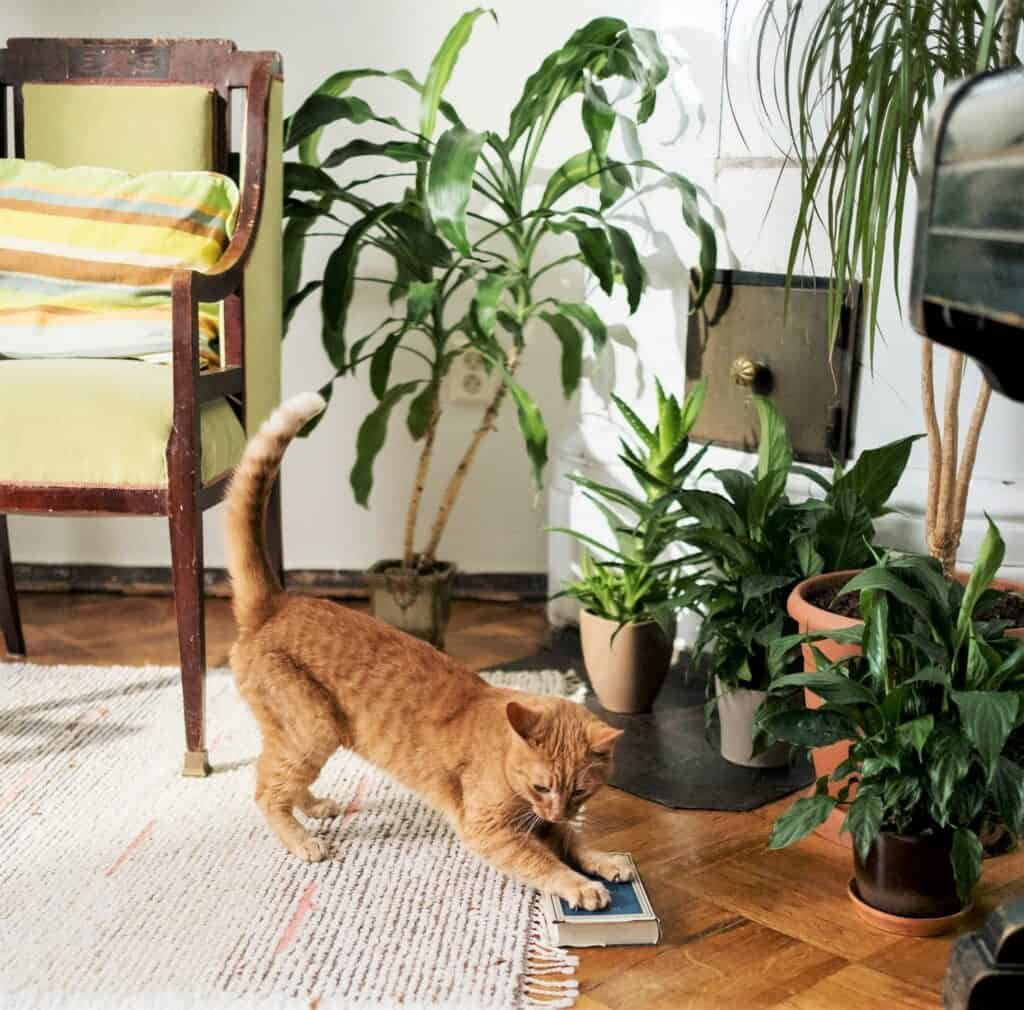
Moreover, the sap might cause eye and skin irritation. If you or your children ate showing such symptoms, seek medical assistance as soon as possible.
Likewise, you can consult a local veteran or Call the APCC at (888) 426-4435 if your pet shows such symptoms.
FAQs About Philodendron bipennifolium
1. Is my Philodendron bipennifolium Rare?
Philodendron bipennifolium is a plant that does not come without paying a high price.
The plant is not easy to propagate and also demands specific care standards.
Likewise, it is not among the most common plants that you can find easily. Therefore, your Philodendron is a unique and astounding variety.
2. Is There Variegated Philodendron bipennifolium?
Variegated horsehead is a rare and special variety of philodendrons. Its peculiar yellow pattern on the green leaves makes it a desirable variety.
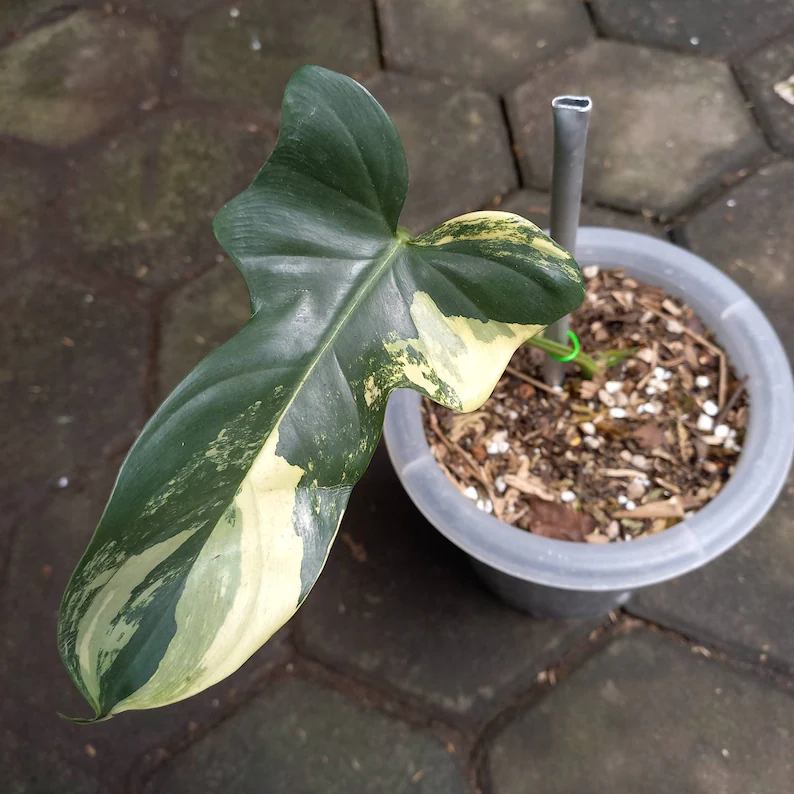
3. Why is my Philodendron bipennifolium leaves Wilting?
Several factors are responsible for wilting of Philodendron horsehead leaves.
Watering issues, high temperature, low humidity, and disease and pests infestation are some of its culprits.
What about the care and growing of other philodendrons? Well, Philodendron Serpens and Philodendron Moonlight are excellent options for you!
Conclusion
When you have mastered their growing tips, why not get yourself a Philodendron bipennifolium?
Head on to a nursery, grab a horsehead, and adorn your space with its lush green leaves.
When it comes to horsehead, always remember they are a tropical plant, and therefore you need to create the same environment.
It includes high humidity, warm temperature, consistently moist and nutrient-rich soil.
Also, remember to give a little touch through pruning to maintain their bushier and convenient size.
Also watch,


